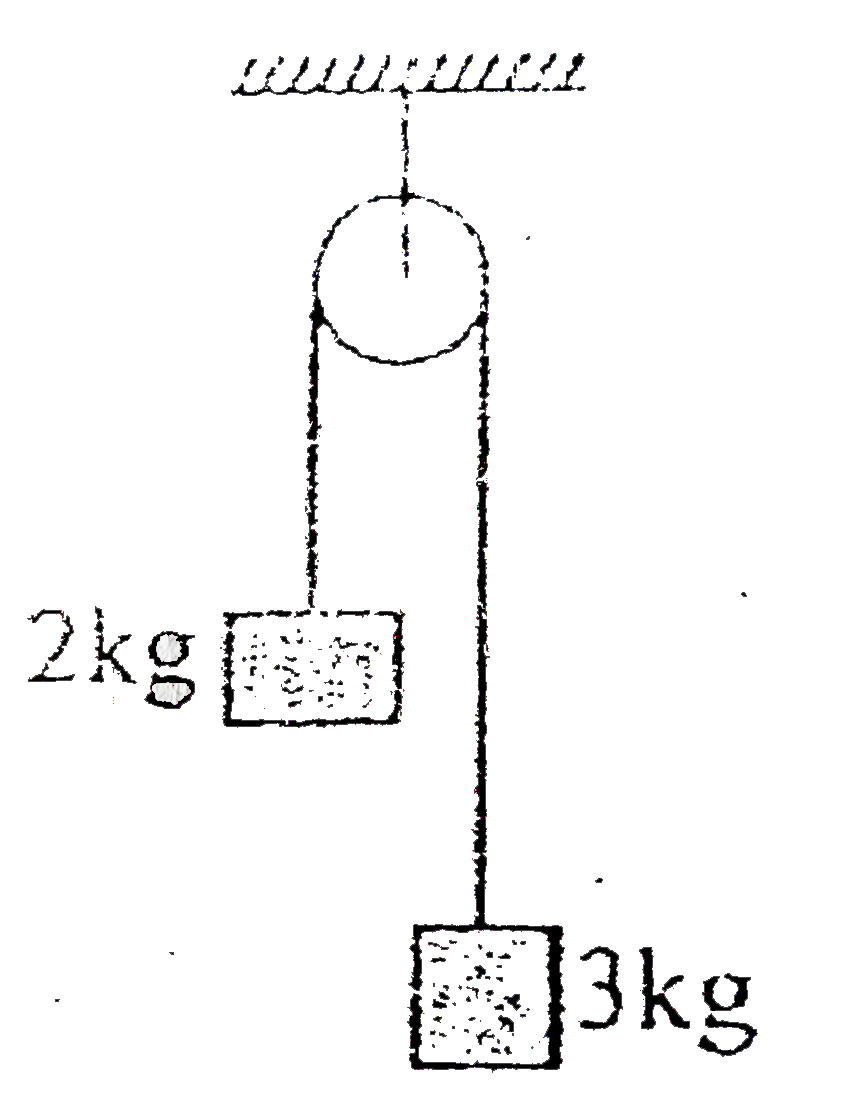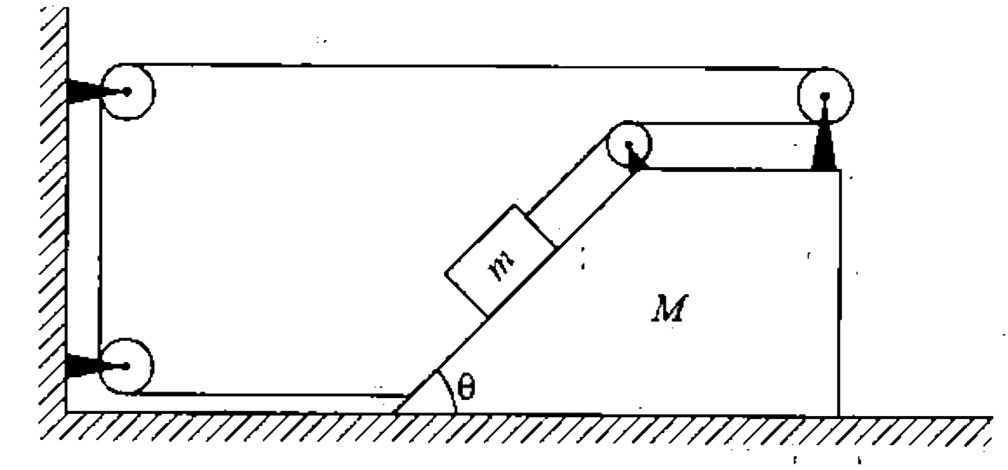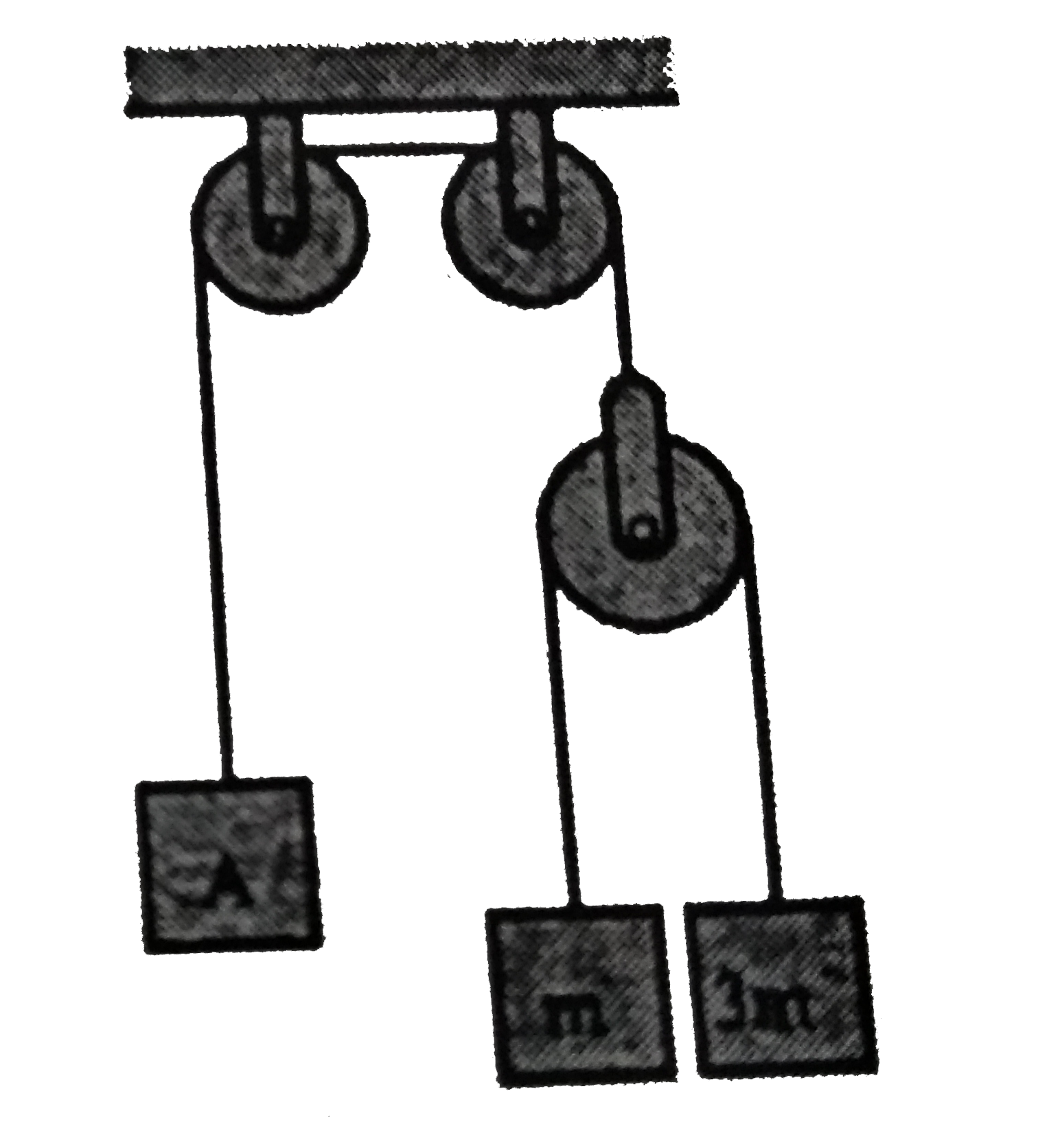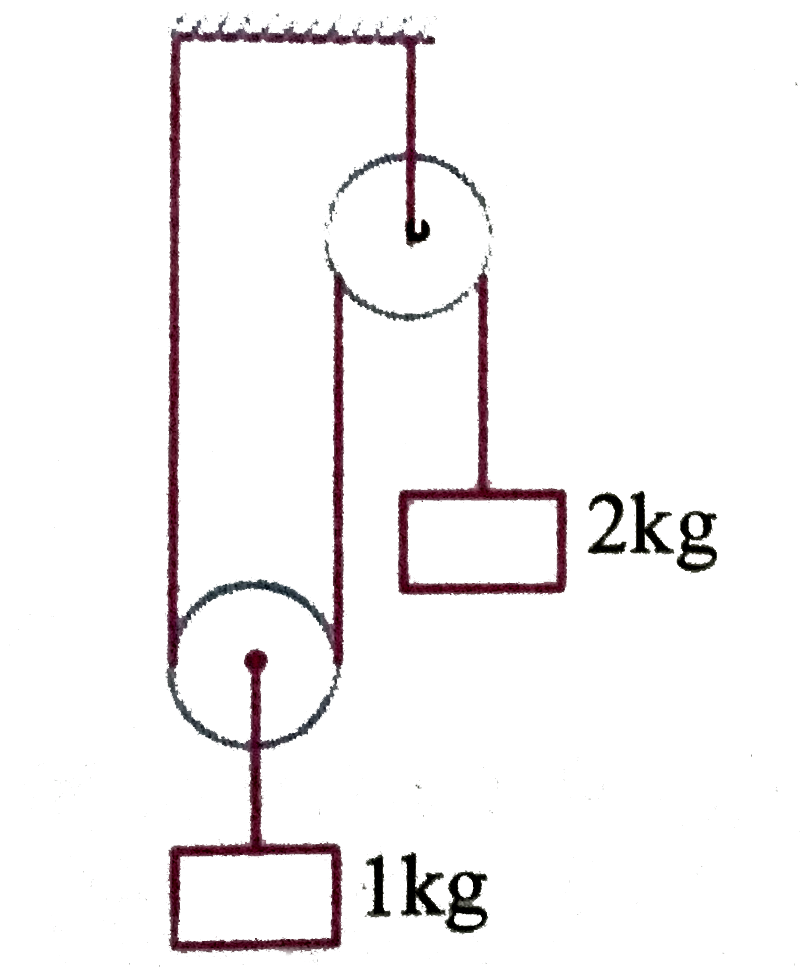The heavier block in an atwood machine has a mass twice that of the lighter one. The tension in the string is 16.0 N when the system is set into motion. Find the decrease in the gravitational potential energy during the first second after the system is released from rest.Solution in Tamil
The correct Answer is:A
Given, T=16N
from the freebody diagrams
t−2mg+2ma=0…..i
T−mg−ma=0 ………..ii
From equation i and ii
T=4ma<br>rarr a=T/(4m)=4/m m/s^2<br><imga≤ocr_imageload∈g=lazysrc=https://d10lpgp6xz60nq.cloudfront.net/physics_images/HCV_VOL1_C08_E01_066_S01.pngwh=80%mx-autosty≤=background:white;><br>Now, S=ut+1/2 at^2<br>=(1/2)xx4lmxx1<br>=(2/m)m [because =0]<br>Netmass=2m-m=m<br>Decrease∈P.E.=mgh<br>=mxxgx(2/m)<br>=9.8x2=19.6J
Topper's Solved these Questions
Similar Questions
A heavy stone is thrown from a cliff of height h with a speed v. The stone will hit the ground with maximum speed if it is thrown
11:03View SolutionA wave pulse passing on a string with speed of 40cms−1 in the negative x direction has its maximum at x=0 at t=0. Where will this maximum be located at t=5s?
04:26View SolutionIn a simple Atwood machine, two unequal masses m1andm2 are connected by string going over a clamped light smooth pulley . In a typical arrangement m1=300g and m2=600g. The system is released from rest. (a). Find the distance traveled by the first block in the first two seconds. (b). Find the tension in the string. (c). Find the force exerted by the clamp on the pulley.
 11:56View Solution
11:56View SolutionThe two blocks in an Atwood machine have masses 2.0 kg and 3.0 kg. Find the work done by gravity during the fourth second after the system is released from rest.
05:46View SolutionThe system shown in figure is released is released from rest . Find acceleration of different string blocks and tenson in different strings.
03:03View SolutionSimple Atwood Machine as System of Particles The system shown in the figure is known as simple Atwood machine. Initially the masses are held at rest and then let free. Assuming mass m_(2) more than the mass m_(1) , find acceleration of mass center and tension in the string supporting the pulley.
03:33View SolutionIn the ideal atwood machine arrangement shown, what is the change in kinetic energy of the system in 1√2second of their motion starting from rest ?
 02:51View Solution
02:51View SolutionFigure-2.64 shows a block of mass M supporting a bar of mass m through a pulley system. If system is released from rest, find the acceleration of block M and the tension in the strings
 View Solution
View SolutionIn the given figure, Find mass of the block A, if it remains at rest, when the system is released from rest. Pulleys and strings are massless. [g=10m/s2]
 03:41View Solution
03:41View Solutionऊपर के प्रश्न 32 में बताई गई एटवुड-मशीन में निकाय में गति प्रारंभ होने के 2 s पश्चात भारी वाले द्रव्यमान (m2) को एक क्षण के लिए रोक दिया जाता है | डोरी के पुन: तनाव में आने में लगा समय ज्ञात कीजिए |
10:50View SolutionIn the system shown in figure, the block A is released from rest. Find

Tension in the string.02:54View SolutionTwo blocks of different masses are hanging on two ends of a string passing over a frictionless pulley. The heavier block has a mass twice as that of the lighter one. The tension in the string is 60N The decrease in potential energy during the first second after the system is released 2K Joule. Then find the value of K. (Takeg=10ms2)
09:15View SolutionThe two blocks in an Atwood machine have masses 2.0 kg and 3.0 kg. Find the work done by gravity during the fourth second after the system is released from rest.
15:01View SolutionThe system shown in figure is released is released from rest . Find acceleration of different string blocks and tenson in different strings.
03:57View SolutionIn the pulley-block system shown in figure, strings are light. Pulleys are massless and smooth. System is released from rest. In 0.3 seconds.
 . 01:21View Solution
. 01:21View SolutionSimple Atwood Machine as System of Particles The system shown in the figure is known as simple Atwood machine. Initially the masses are held at rest and then let free. Assuming mass m_(2) more than the mass m_(1) , find acceleration of mass center and tension in the string supporting the pulley.
04:57View Solution

